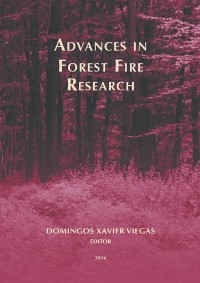Please use this identifier to cite or link to this item:
https://hdl.handle.net/10316.2/34199| Title: | Past and present fire regimes in temperate forest zone of lowland Central Europe | Authors: | Zin, Ewa Niklasson, Mats Szczygieł, Ryszard |
Keywords: | annually burned area;Białowieża Forest;dendroecology;fire ecology;fire history;fire protection;fire scars;fire suppression;forest fires;forest fire statistics;mean annual number of fires;Pinus sylvestris;Poland;tree rings | Issue Date: | 2014 | Publisher: | Imprensa da Universidade de Coimbra | Journal: | http://hdl.handle.net/10316.2/34013 | Abstract: | Fires in Central European lowland forests are nowadays numerous but efficiently suppressed and hence usually very small. Poland is one of the countries with highest annual number of forest fires in the region, with as many as 9–10 000 individual fire events per year (with record of 17 000 fires in 2003), however of relatively limited size, with 0.5–0.95 ha being mean values of area burned in a single forest fire. Main fire season in Poland lasts from March to September and is driven largely by weather conditions and litter humidity, with people being the dominant source of ignition. Active forest fire prevention and suppression is carried both by the regular fire services and State Forest Administration – the main forest manager in Poland due to the ownership structure of forest land in the country (>80% state-owned). In Białowieża Forest, one of the best preserved lowland forest ecosystems in temperate Europe fires happen at present rather incidental, alike in the rest of the country are effectively controlled and thereby affect very small areas (0.5 ha). However numerous stands with fire scarred trees, stumps and snags, especially in the conifer dominated areas, can be found; indicating substantial fire presence in the past. The first tree ring fire history records from that area evidenced frequent fires in Pinus sylvestris-dominated forests during the 17th up to early 19th centuries, with dramatic decrease in fire presence over the last 150+ years, most likely linked to changes in human fire use and forest management. We conclude that there is a large need for fire history and fire ecology studies in Central Europe due to high population density and strong dominance of flammable conifers in forests of that region. Extended knowledge about past disturbance dynamics and reference conditions may be essential for future sustainable forest management and nature conservation throughout this part of European continent. | URI: | https://hdl.handle.net/10316.2/34199 | ISBN: | 978-989-26-0884-6 (PDF) | DOI: | 10.14195/978-989-26-0884-6_66 | Rights: | open access |
| Appears in Collections: | Advances in forest fire research |
Files in This Item:
| File | Description | Size | Format | |
|---|---|---|---|---|
| 978-989-26-0884-6_66.pdf | 1.27 MB | Adobe PDF |  |
Items in DSpace are protected by copyright, with all rights reserved, unless otherwise indicated.
